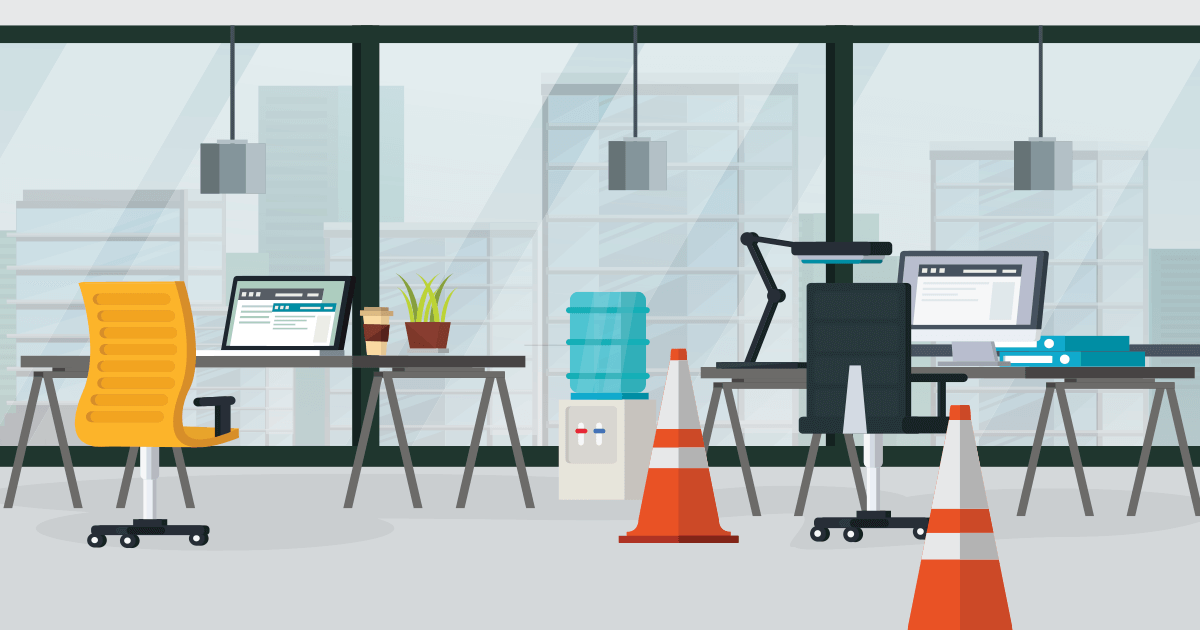When we think of workplace safety, we tend to focus on companies representing high-risk industries like manufacturing and health care. But even seemingly safe office environments have hidden hazards that could endanger your employees’ health and safety.
Do you know what they are? And how to protect your employees from them?
If not, it’s time to make workplace safety a top priority. Not only is it the right thing to do, it’s the law. The Occupational Safety and Health Administration (OSHA) requires every employer to provide a workplace that is free from recognized safety hazards.
Plus, a safe workplace is a better workplace. Employees who feel safe at work are more likely to be productive because they know you care about their well-being. And safe employees are less likely to become injured on the job. So, you save money on workers’ compensation claims and lost productivity.
In short, workplace safety programs are indispensable for any successful business. The best programs pair an in-depth safety assessment with a solid safety training program.
Here are five steps to make your workplace safer.
1. Hunt for hazards
To determine your unique safety risks, observe your workplace environment and analyze the kind of work your employees do. Let’s say you’re a commercial baker. What hazards and health risks might your employees encounter? Inhaling flour dust — spurring an asthma attack? Or lifting heavy trays of bread — triggering a strain?
To begin researching your industry’s specific safety requirements, consult the websites for OSHA and the National Institute of Occupational Safety and Health (NIOSH), or conduct a quick Google search to see what risks you may have missed. Just be mindful of the validity of your information sources.
And don’t forget slips, trips, falls and fires are common hazards for all companies, no matter the industry.
2. Then control those hazards
Safety experts recommend following a hierarchy of controls — elimination, substitution, engineering controls and administrative controls — to prevent workplace hazards.
Here’s how this works:
Step 1: See if you can eliminate the hazard first.
Step 2: If you can’t eliminate it, then substitute it for something less dangerous.
Step 3: Use engineering controls to isolate people from the hazard, for example, a machine guard that prevents employees from getting their hands caught.
Step 4: Use administration controls, such as policies and operating procedures, personal hygiene practices and training, to change the way people work — and make it safer.
3. Tailor your training
Once you’ve identified hazards particular to your company, train your employees on how to handle them.
Basic safety awareness should be the cornerstone of every company’s safety training program. That includes training employees on how to report hazards and accidents, respond to emergencies and prevent fires.
A fire can happen in an office area as much as it can happen in a chemical plant. Employees should be trained on how to handle different emergency situations and who has responsibility for those situations. Detail these steps in a written safety policy document and give it to employees so they can study it and consult it in an emergency.
When the basics are out of the way, tailor your safety training to how your employees work.
Do they drive? Then offer defensive driving training. Do they sit at a desk all day? Then touch on ergonomics and the need to incorporate activity into their daily routine.
4. Seek resources
Not sure how to provide safety training, or whether your company can even afford it? You’re not alone. Luckily there are many resources available to growing businesses, at costs that won’t break your budget.
Did you know that many states require insurance carriers to offer free safety services? Simply call your insurance agent or contact your carrier directly to see if you qualify.
Other training resources include safety conferences, OSHA and industry associations. In addition to workshops and traditional classroom training, technology has made it easier than ever for employees to fit safety training into their schedules, and for employers to track their safety compliance and the effectiveness of their safety programs. Many organizations offer online classes, webinars and safety videos.
5. Set it, but don’t forget it
After your safety program is in place, keep the momentum going. A good safety program takes careful planning and regular maintenance.
For example, consider creating a training matrix to identify your safety hazards and couple it with an annual training schedule for employees. Add in easily accessed online classes, and you have a powerful way to provide training, as well as track your safety progress.
This kind of coordinated and consistent approach to workplace safety can pay off in a big way — leading to fewer injuries and a better work environment for everyone.
Want to make your workplace safer?
Learn more about the necessary steps to improve workplace health and safety in our free e-book, Employment Law: Are Your Putting Your Business at Risk?


